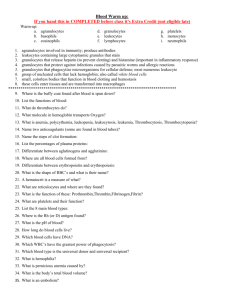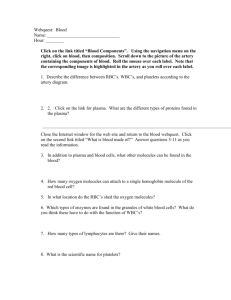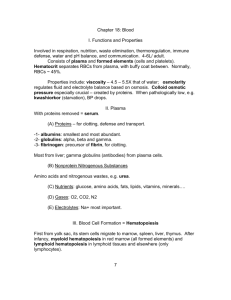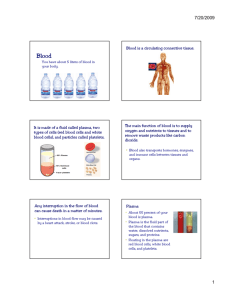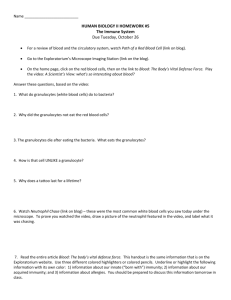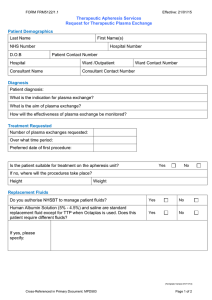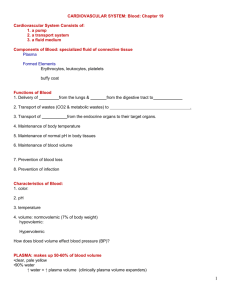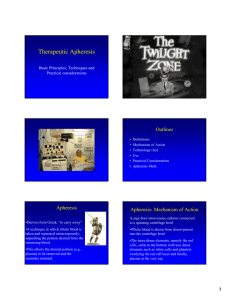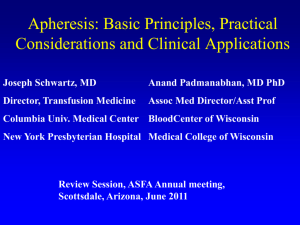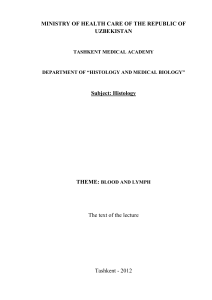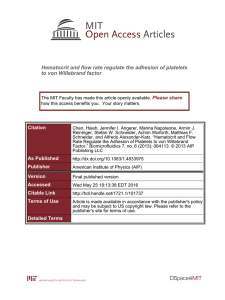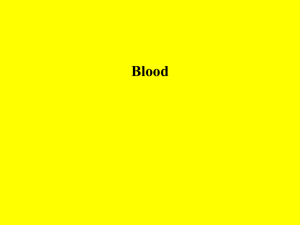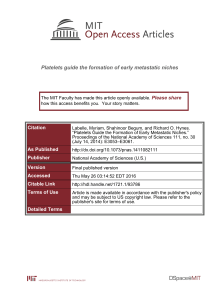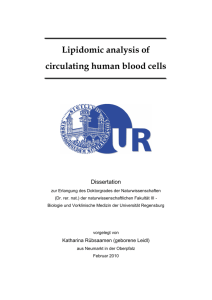Red Cell Contamination in Platelets and Apheresis Granulocytes
advertisement
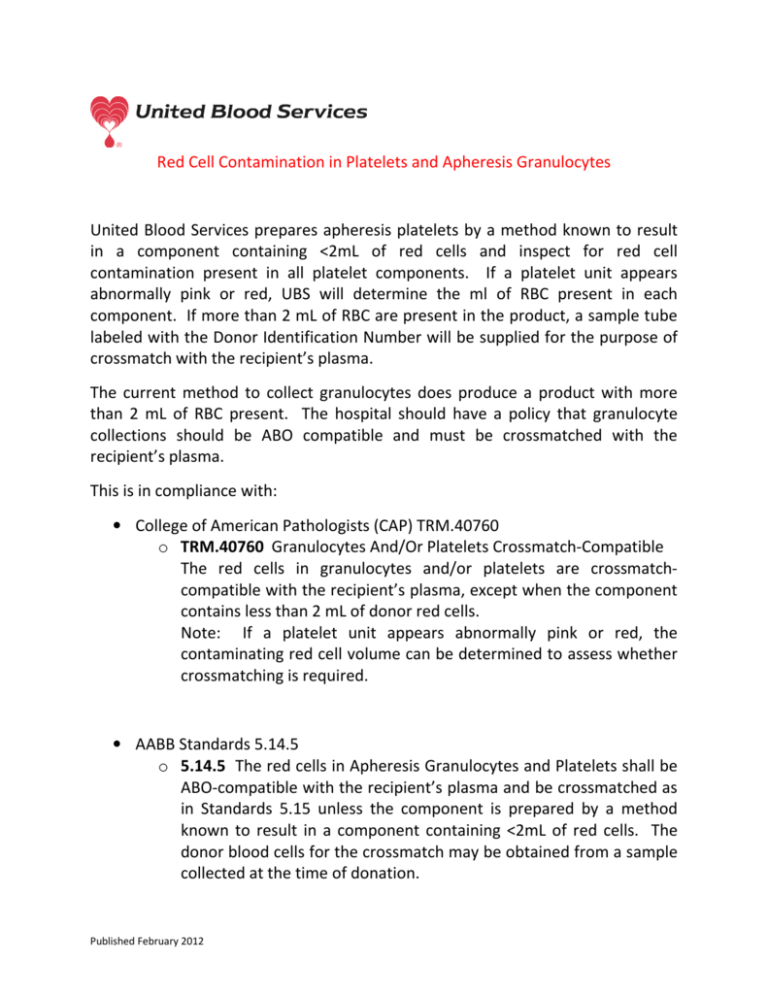
Red Cell Contamination in Platelets and Apheresis Granulocytes United Blood Services prepares apheresis platelets by a method known to result in a component containing <2mL of red cells and inspect for red cell contamination present in all platelet components. If a platelet unit appears abnormally pink or red, UBS will determine the ml of RBC present in each component. If more than 2 mL of RBC are present in the product, a sample tube labeled with the Donor Identification Number will be supplied for the purpose of crossmatch with the recipient’s plasma. The current method to collect granulocytes does produce a product with more than 2 mL of RBC present. The hospital should have a policy that granulocyte collections should be ABO compatible and must be crossmatched with the recipient’s plasma. This is in compliance with: • College of American Pathologists (CAP) TRM.40760 o TRM.40760 Granulocytes And/Or Platelets Crossmatch-Compatible The red cells in granulocytes and/or platelets are crossmatchcompatible with the recipient’s plasma, except when the component contains less than 2 mL of donor red cells. Note: If a platelet unit appears abnormally pink or red, the contaminating red cell volume can be determined to assess whether crossmatching is required. • AABB Standards 5.14.5 o 5.14.5 The red cells in Apheresis Granulocytes and Platelets shall be ABO-compatible with the recipient’s plasma and be crossmatched as in Standards 5.15 unless the component is prepared by a method known to result in a component containing <2mL of red cells. The donor blood cells for the crossmatch may be obtained from a sample collected at the time of donation. Published February 2012
